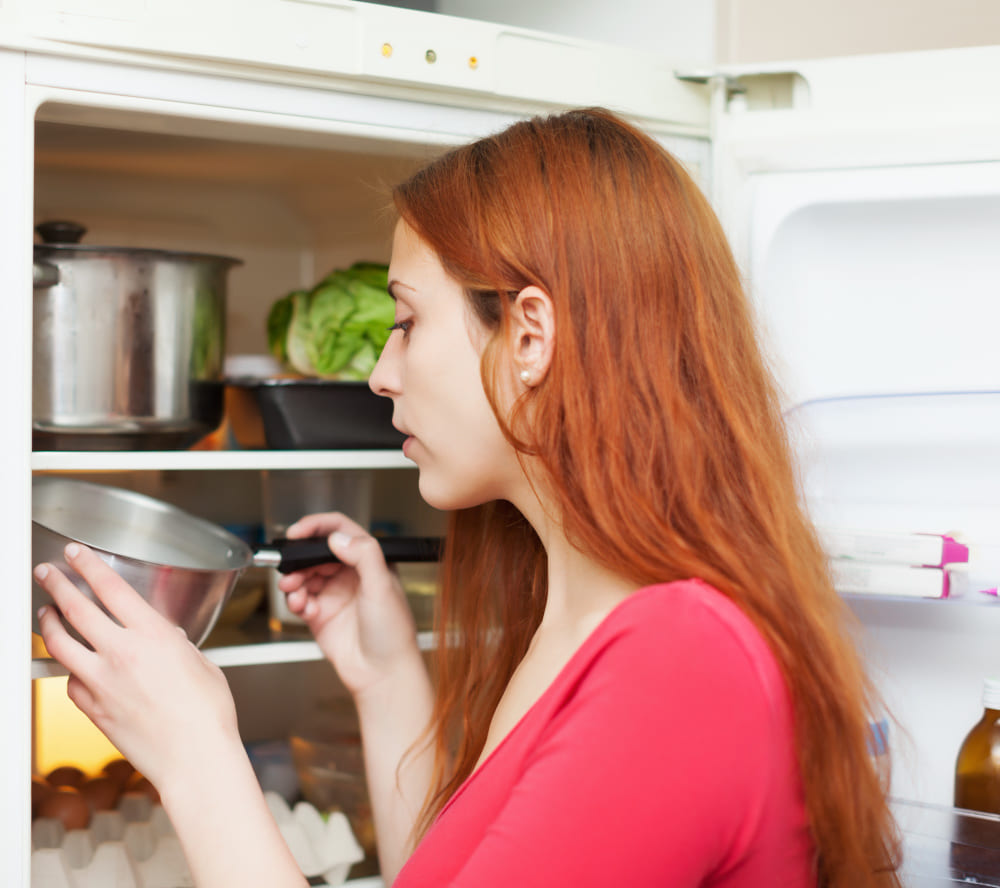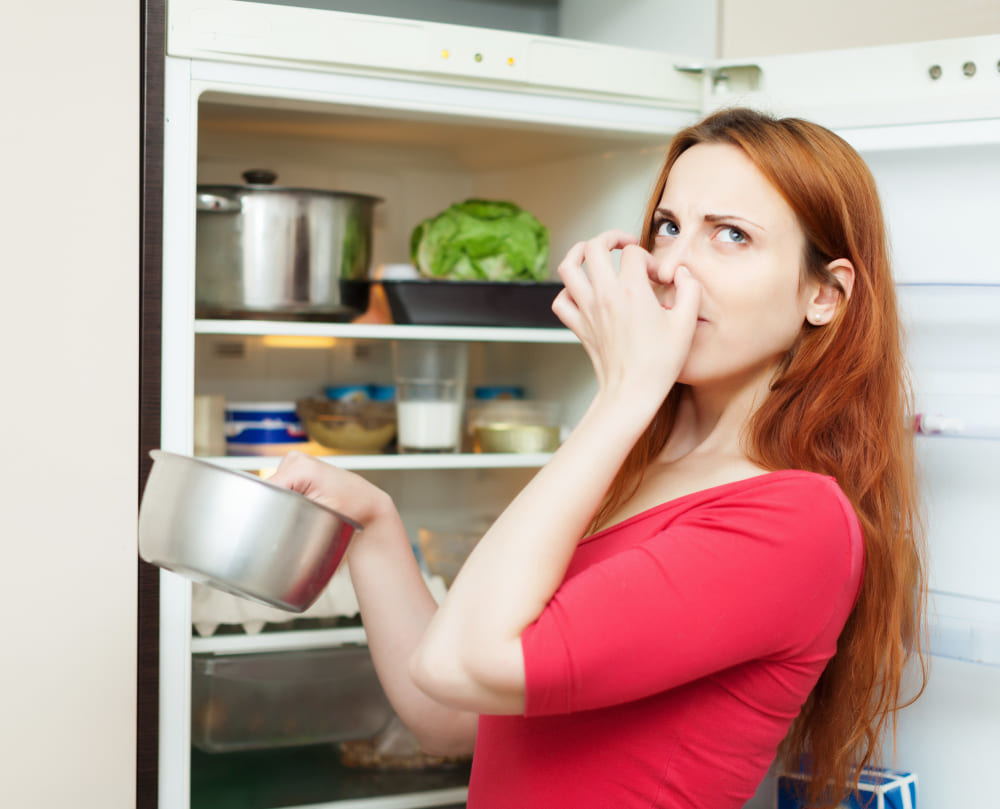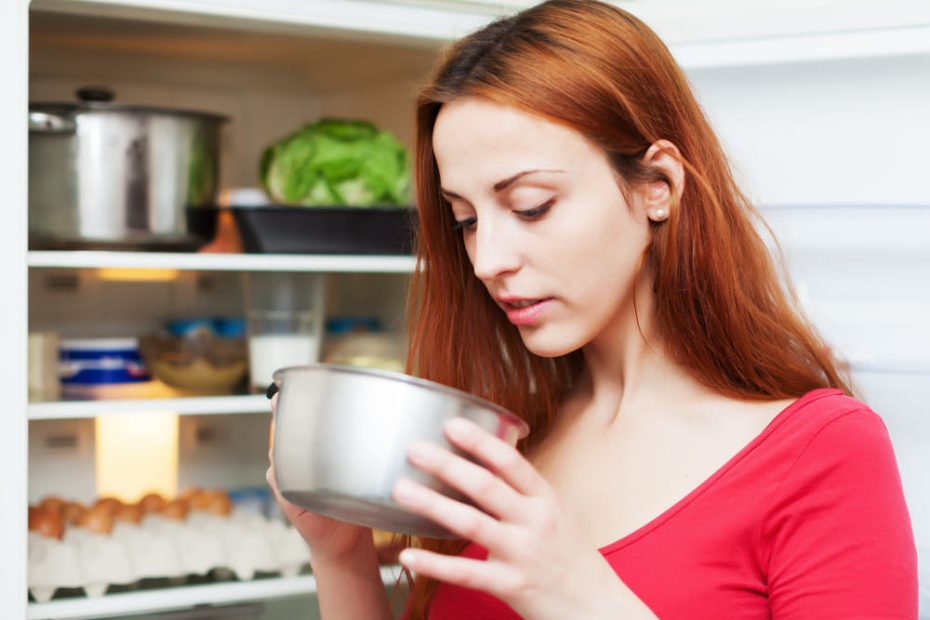For many households, rice is a pantry staple that appears at dinner a few times a week. Rice is cheap, cooks up quickly, and you can have a fabulous new best friend with any protein. Whether you are meal prepping to get through the week, or you’re just putting away leftovers after take-out, you’ve likely thrown leftover cooked rice in the fridge a few times without thinking about it.
But here’s the thing: improperly storing cooked rice can actually make you sick, and it happens more often than you may think. Yes, rice. Good ole harmless rice. But, under the right conditions, rice can harbor a potentially lethal species of bacteria due to improper storing practices. It’s one of those things that I feel like no one ever talks about, but everyone should know.
Let’s get to it. Here are 10 important things that nobody tells you about storing cooked rice, and how to keep your kitchen safe and your stomach happy.
1. Rice Can Provide A Breeding Ground For a Spore-Forming Bacteria
Here’s where most people don’t understand: cooked rice can be contaminated by Bacillus cereus, a spore-forming bacteria that can produce toxins to result in severe food poisoning.
Here’s the kicker: the spores can survive cooking, so after you’ve been feverishly boiling your rice your work isn’t quite done. Once the rice is cooled down to room temperature, then the spores can multiply faster and that’s where we have a serious issue.
2. You Have a 1-Hour Window to Refrigerate
It A lot of people think you can leave rice out for a little while before you have to deal with it. Perhaps it is on the counter while you are cleaning up, or when you finally do the dishes you discover it is hours later.
This is a bad idea.
Food safety experts recommend refrigerating cooked rice within 1 hour of cooking. Leaving it out any longer gives food-borne pathogens the opportunity to grow. Once Bacillus cereus survives, there is no guarantee that simply reheating it to just a hot enough temperature will kill any toxins it has formed.

3. Don’t Put in Container when it is warm
It may be tempting to scoop warm rice into a container and just place in fridge. But it can be harmful in a long run. Hot food raises your refrigerator’s internal temperature and also puts other food (meat, vegetables,and fruit) at risk. A sealed container full of steam creates a wet environment for bacteria.
So, let the rice cool completely. The best method to cool the rice is to spread the rice out on a clean baking sheet or something shallow. By doing that, heat can escape faster in a more even fashion. Once the rice is close to room temperature (again, under that 1-hour window), you can safely place into a sealed container and refrigerate!
4. Airtight Containers Are Non-Negotiable
Just throwing some rice in a bowl with foil or a loose lid will not work. You need airtight containers, no ifs, ands, or buts. When air gets into an open container with rice, moisture comes in with it, and bacteria LOVE moisture. If you have a proper seal you limit contamination, moisture exposure, and retain freshness for the rice.
Another pro-tip, use clear containers so you can monitor changes in texture or color. And use plastic or glass (with snap lock lids) that is NOT BPA free.
5. Your Refrigerator Has To Be Cold Enough
You perhanps wouldn’t have looked at the temperature of your fridge but if it’s over 40°F (4°C), then you just put your rice (and all the other food in your fridge) at risk. The “danger zone” for bacteria growth is 40°F (4°C) to 140°F (60°C) and on the lower end, you’re not allowing other bacteria like Bacillus cereus any space for reproduction.
Are you unsure what the temperature of your fridge is? Go get fridge thermometers! They’re cheap and can save you a lot of economic grief.
6. “The Smell Test” Doesn’t Work Very Well
Arguably one of the biggest misconceptions in home kitchens is that you can depend on sensory evaluation to assess food safety. Stinky meat? It smells. Bad milk? It curdles.
Spoiled rice, on the other hand, often provides no sensory clues.
Rice that is harboring bacteria can appear to look and smell completely normal. That means that you can’t trust a sniff test to evaluate if it’s still okay to eat. Follow the clock, not your nose. If it has been more than four days in the fridge, it can go in the bin.
7. Reheating Doesn’t Destroy Toxins
Just because you microwave your rice until it’s steamy hot doesn’t mean it will be safe.
Bacillus cereus is not only dangerous because it reproduces quickly but, more troublingly, the toxins it produces are heat-resistant. Even after reheating the rice, the toxins will still lead to nausea, vomiting, and diarrhea a few hours after eating.
What can you do? Your first step to a solution is to make sure the rice cools down and is stored properly. Microwaving is not a step to fix the problem; microwaving is the last solution.

8. Never Reheat More than One Time
It can be tempting to get that container of rice from the refrigerator, warm up a portion, and then put the rest back for tomorrow. The reality here is that every time that rice leaves the fridge and is brought to room temperature, even for a short time, whatever bacteria survive will have the chance again to grow. When you reheat and cool it again, you are multiplying the risk.
9. Freeze It If You Won’t Be Eating It Soon.
Cooked rice is good for about 3 to 4 days in your refrigerator. After that it gets spoiled so follow the following method and save your rice.
Here’s how to do it:
- Use freezer-safe containers, or freezer-safe bags and portion it out.
- Press out any excess air and seal.
- Label with the date.
10. Watch for Subtle Signs of Spoilage
While rice typically isn’t too obvious when it is going bad there are a couple things to watch for.
- Soggy or slimy: If it’s stickier than normal (and not in a good way) that’s a sign.
- Smell: Any sort of sour, musty, or “off” smell means it goes in the trash.
- Discoloration: Yellow or gray? You shouldn’t even think about it.
When in doubt throw it out. A small container of rice certainly isn’t worth a night of stomach cramps, or worse.
Conclusion
While it may not sound like a big deal in your everyday routine, how you store cooked rice is actually one of those small details that can have a huge impact on your overall health, and what appears to be a harmless container of leftovers can actually become harmful if you don’t know which steps to follow.
With some awareness of how rice performs after cooking and how swiftly bacteria can take hold, you are not only staying organized in your fridge, but also keeping yourself and your family safe from foodborne illness. Learn it, share it and let’s stop storing rice the unsafe way!

Numrah Fareed is a freelance writer and home organization enthusiast with a passion for practical, eco-friendly living. When not typing away at her desk, she’s experimenting with DIY cleaning hacks and helping readers simplify their routines one tip at a time.
